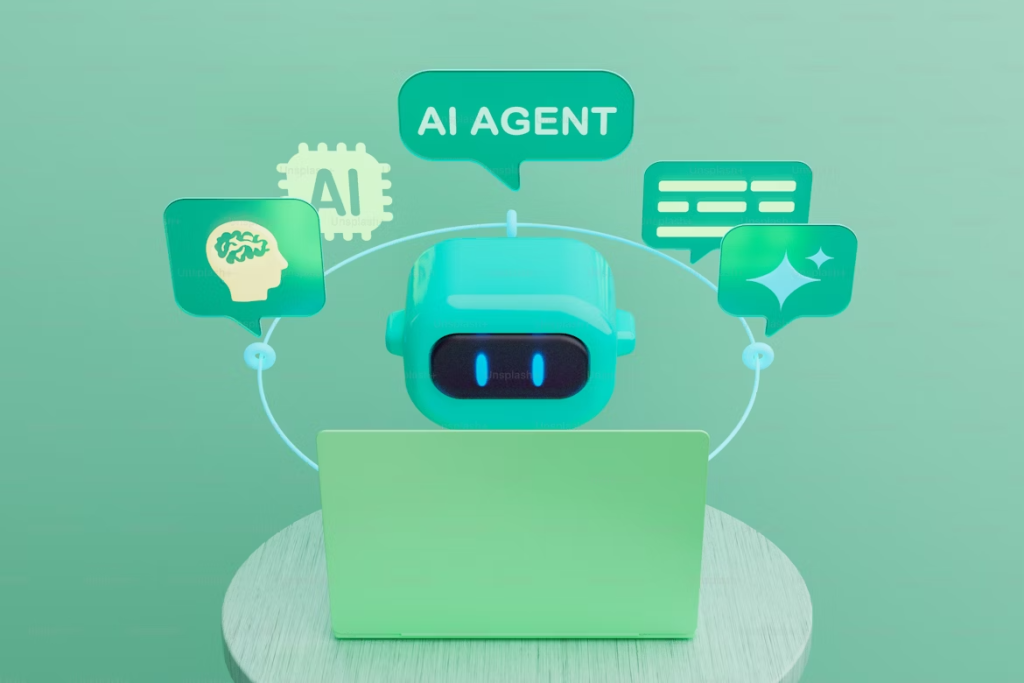
Artificial intelligence has moved beyond being a support tool for marketers. Today, AI agents—sometimes referred to as agentic AI—are reshaping how campaigns are built, deployed, and optimized. Unlike traditional AI applications that respond to prompts or generate one-off content, agents can take initiative, integrate with multiple systems, and continuously act toward defined goals.
For marketing executives and managers, understanding where these tools are being applied and how they may evolve is essential for planning budgets, team structures, and long-term strategy.
Current Use Cases in Marketing
The most widely adopted agentic applications are emerging in five areas:
-
Campaign OptimizationAgents monitor multi-channel campaigns, shift budgets in real time, test creative variations, and pause underperforming ads without requiring constant human oversight.
-
Content Generation and RepurposingTools now generate blog posts, emails, and ad copy at scale, then repurpose long-form content into channel-specific assets such as social media snippets or email sequences.
-
Personalization and Customer JourneysWebsite and app experiences are being tailored dynamically by agents that segment audiences, adapt landing pages, and adjust messaging at the account or individual level.
-
Conversational Lead EngagementAdvanced chat and voice agents qualify leads, book appointments, and route conversations to sales teams, effectively becoming the first touchpoint in the funnel.
-
Language and Message OptimizationSpecialized systems refine subject lines, push notifications, and calls-to-action by analyzing which emotional tones and phrasing drive conversions.
Tools and Platforms to Know
While the landscape is evolving quickly, several categories of platforms have become prominent:
- Enterprise suites with embedded agents: Salesforce’s Agentforce, HubSpot’s Breeze Agents, and Adobe’s AI features now extend beyond analytics into autonomous campaign execution.
- Creative and ad platforms: Jasper, Copy.ai, AdCreative.ai, and Albert.ai automate creative development and optimization.
- Personalization engines: Mutiny and Drift focus on customizing website experiences and conversational engagement.
- Message optimization specialists: Persado and Phrasee apply natural language generation to refine customer communications.
- SEO and content strategy agents: MarketMuse and SurferSEO support planning, optimization, and performance monitoring.
The Technology Behind Agentic AI
Three technological shifts are enabling these capabilities:
- Large Language Models (LLMs) provide the creative and conversational foundation.
- Integration with data and execution systems (CRM, advertising platforms, analytics) allows agents to act across the marketing stack.
- Feedback loops powered by reinforcement learning enable continuous improvement, as agents measure outcomes and adjust tactics.
Looking Ahead: The Future of Agentic AI
For marketing leaders, several trends are worth watching:
-
Greater Autonomy Across ChannelsAgents are moving from channel-specific optimization to orchestrating campaigns holistically across email, search, social, and web.
-
Hybrid WorkflowsHuman oversight will remain central, but agents will increasingly handle execution at scale—freeing teams to focus on strategy, creative direction, and compliance.
-
The Rise of Small Language Models (SLMs)A notable shift is the emergence of smaller, domain-specific models. Unlike general-purpose LLMs, SLMs can run faster, at lower cost, and within secure environments—ideal for real-time campaign adjustments or industries with strict data privacy requirements.
-
Measurement and AccountabilityExpect more emphasis on incrementality testing and transparent reporting, giving leaders confidence that AI-driven actions are generating true business impact.
-
Governance and ComplianceAs agents become more autonomous, ensuring brand safety, ethical use, and adherence to privacy regulations will be non-negotiable.
Key Takeaways for Marketing Leaders
- AI agents are already operational in campaign optimization, content, personalization, and customer engagement.
- Selecting the right tool depends on your primary goal—whether that’s creative scale, pipeline acceleration, or multi-channel efficiency.
- Small Language Models point toward a future of faster, more cost-effective, and privacy-compliant AI deployment.
- Human leadership remains critical: success depends not on replacing teams but on aligning agentic AI with marketing strategy, customer expectations, and compliance frameworks.
Agentic AI is no longer experimental. It is becoming a core part of how marketing organizations operate. For executives and managers, the opportunity lies in harnessing these systems to amplify impact—while setting the guardrails that ensure creativity, compliance, and customer trust




